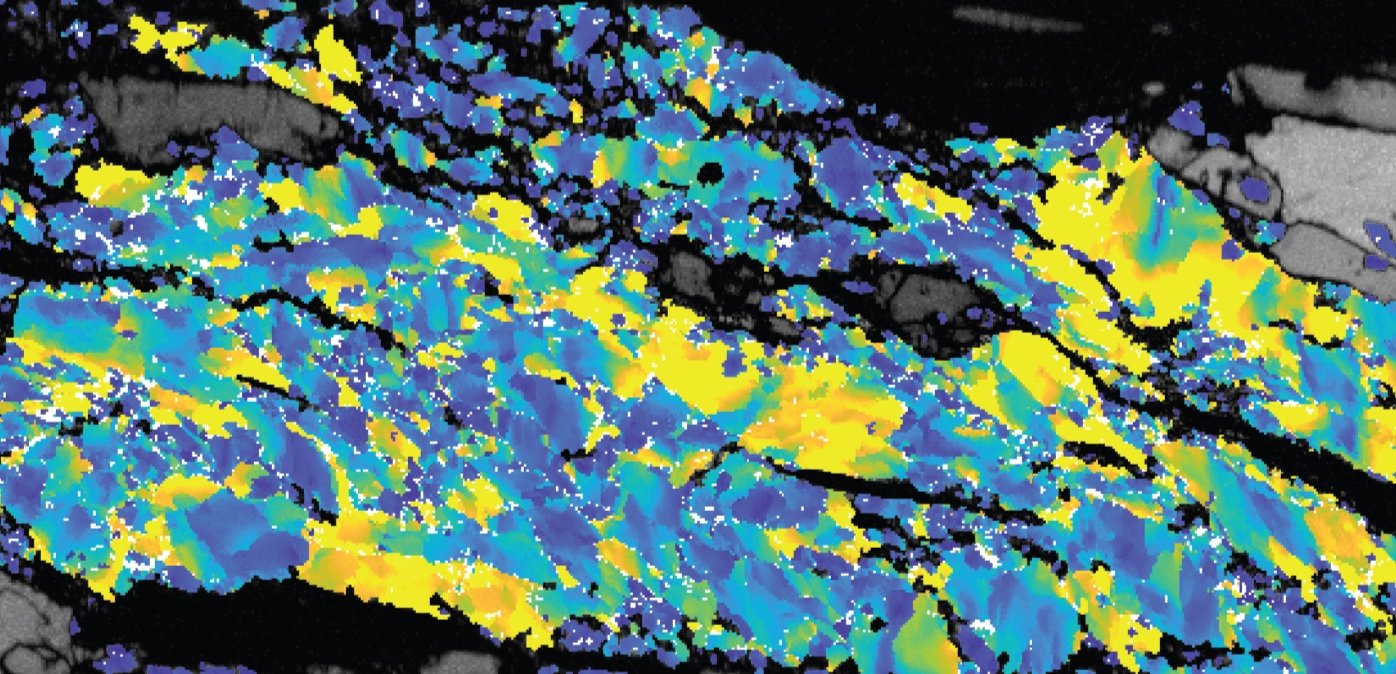
Research
Subduction Underplating
Poulaki et al., 2023 (GCubed)
Subduction zones are tectonic boundaries on Earth where one lithospheric slab sinks underneath another. The density-driven downward pull of the sinking slab is one of the primary drivers of plate tectonics. The mechanism that allows for subducted rocks to escape the downgoing slab and transfer to the overriding plate is called underplating. I am interested in the mechanisms and processes that promote underplating and exhumation through the application of combined geochronology, microstructural analyses, and detailed field observations.
Dating deformation & fluid-rock interactions
Poulaki et al., 2023 (GCubed)
Fluid circulation has large effects in various tectonic settings, from subduction zones to continental rifts, and are linked to seismicity, geothermal reservoirs, and mineral resource deposits. Fluid tracers are recorded in the rock record by numerous mineral facies, including apatite, zircon, titanite, rutile etc. My research focuses on dating the newly formed minerals during metasomatism and fluid interactions to give a more holistic idea of when and under which conditions growth has occurred.
My work is currently focused on dating fluids, fluid/rock interactions and deformation in subduction zones.
Next spring, I will be sailing on the 402 IODP expedition and will be collecting samples to date fluid-rock interactions and serpentinization in the continent-ocean transition during mantle exhumation.
Metamorphic Zircon and partitioning with other accessory phases
Zircon U-Pb dating is a powerful and widely used geochronologic technique to constrain the timing and rates of magmatic and high-grade metamorphic processes as well as sediment provenance. These events are not only recorded by the age of zircon growth, but also the trace element (TE) geochemical signatures recorded by the zircon, reflective of the magmatic, metamorphic, or metasomatic processes during zircon growth.
I have actively developed techniques from data collection to various Python workflows to visualize, categorize, and interpret these data. The combination of these techniques produced a 2-D isotopic and trace elemental map of zircon grains from the rim to core and determine the timing and conditions that the zircon rims were formed (Poulaki et al., 2021, Gevedon, Poulaki et al., in prep).
I am interested in the partition of zircon with other accessory mineral phases, especially in the presence of garnet, apatite rutile etc.
Poulaki et al., 2021
Poulaki et al., in prep
Provenance
Detrital Zircon analyses in complicated settings like the Arctic and subduction margins are essential to elucidate regional paleogeographic reconstructions and tectonic plate motions through time.
I have used zircon and apatite U-Pb geochronometric methods to define the paleogeographic evolution of the Eastern and Western Mediterranean and the subduction interaction with the Eurasian plate, the evolution of the Hellenic and Betics subduction zones (Poulaki et al., 2019; Flansburg et al., 2019; Laskari et al., 2022; Poulaki and Stockli, 2022).







